Picture This: Like the rest of Southern California, the Pomona campus saw unprecedented swarms of migrating painted lady butterflies this spring, due to the superbloom in the desert areas where they breed.
—Photo by Kristopher Vargas
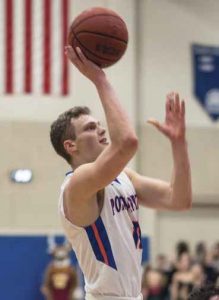 It was an eventful winter for Pomona-Pitzer sports as Sagehens swept the SCIAC tournament championships in men’s and women’s basketball and dominated the conference once again in swimming and diving.
It was an eventful winter for Pomona-Pitzer sports as Sagehens swept the SCIAC tournament championships in men’s and women’s basketball and dominated the conference once again in swimming and diving.
The men’s basketball team claimed both the conference title and the tournament, with a historic season featuring program bests for wins (26), conference wins (15), win-streak (18) and highest national ranking ever (No. 9). The team also advanced to the second round of the NCAA tournament with a 58–37 win over Texas-Dallas before losing to second-ranked Whitman College in round two.
After finishing second in the conference, the women’s basketball team won their first SCIAC tournament championship and advanced to the NCAA tournament for the first time since 2002. Although they lost in the first round to the University of Wisconsin, Oshkosh, the team finished with 22 wins, topping 20 wins for only the seventh time in program history.
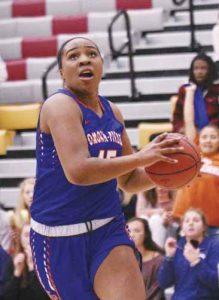 The men’s and women’s swimming and diving teams also swept the SCIAC championships for the second time in as many years. The women went on to place seventh at the NCAA championships, with the men taking 11th overall. The teams combined to end the year with 20 All-Americans.
The men’s and women’s swimming and diving teams also swept the SCIAC championships for the second time in as many years. The women went on to place seventh at the NCAA championships, with the men taking 11th overall. The teams combined to end the year with 20 All-Americans.
The Pomona-Pitzer men’s cross-country team finished the NCAA in seventh place overall, while the women’s program finished 32nd at the national championships.
The men’s water polo team went undefeated in conference play and breezed through the SCIAC tournament to reach the NCAA, where they fell to Long Beach State in the opening round. They finished the regular season 22–8 and held noteworthy victories over UC Irvine and Princeton. This is the third straight year the men’s water polo program are conference tournament champions.
As this issue was going to press, the women’s water polo team had just finished their second consecutive undefeated conference season.
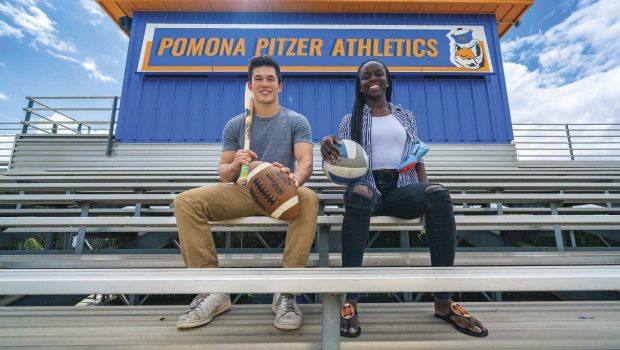 There are seemingly endless tips for time management, but Vicky-Marie Addo-Ashong ’20 and Andrew Phillips ’19 seem to have found a novel one.
There are seemingly endless tips for time management, but Vicky-Marie Addo-Ashong ’20 and Andrew Phillips ’19 seem to have found a novel one.
They leave themselves practically no free time to manage.
The two accomplished Pomona College students are both two-sport athletes—not to mention captains of both of their teams.
“I’ve never considered myself a person who likes to have a lot of free time. If I do, I just sleep a lot,” says Addo-Ashong, a track and field athlete who holds the Pomona-Pitzer record in the triple jump but says her true love is volleyball.
Phillips finished his career as a defensive back on the football team with a second consecutive win over Claremont-Mudd-Scripps in the Sixth Street Rivalry game last fall and is a senior utility player for the baseball team this spring. What’s more, he’s a premed student who already scored well on the MCAT after taking the seven-and-a-half-hour test last August—the day before he arrived on campus for football camp.
“My time management has definitely improved over the course of my college career,” says Phillips, suggesting it hasn’t always come naturally. “There are always times where you are like, ‘Aw, I should have done something productive there.’”
Addo-Ashong, a public policy analysis major and mathematics minor from suburban Washington, D.C., is very active on campus. She’s a campus tour guide—“I love being at Pomona, and I love being able to show it to other people,” she says—a member of the Student-Athlete Advisory Committee, and one of five students on the President’s Advisory Committee on Sexual Violence Intervention and Prevention, which is in its first full year. “That’s been really interesting and important. Being part of that process, I’ve found that to be something I care about a lot,” she says.
Addo-Ashong also works as a research assistant to her academic advisor, Pierre Englebert, professor of international relations and politics. And last year, she was one of the leaders of a sponsor group and commissioner of sports for the Associated Students of Pomona College.
Need a nap yet?
Phillips is also involved in the Student-Athlete Advisory Committee and president of a campus club, the Claremont chapter of Health Guardians of America, a group working to eliminate obesity on college campuses.
What’s more, Phillips has an added degree of difficulty in managing two sports as a neuroscience major preparing to apply for med school. That’s because lab classes—a crucial part of his coursework—often don’t end until after practice begins.
“When I was getting recruited, the Division I schools said you have to do econ or history or something like that; basically, you couldn’t take labs,” Phillips says. “So that was part of why D-III. The coaches are really understanding about labs and the importance of academics. Also, the two-sport thing, that’s something special about D-III, for sure.”
This spring, Phillips has a genes and behavior lab on Tuesdays that starts at 1:30 p.m. and gets out around 4, but practice starts at 3:15. Usually that means putting in extra work before practice or staying late, taking extra batting practice or such. Sometimes, the conflicts are more extreme.
“My junior year, I had a biochemistry lab, which is the lab that takes the most time, I think. I took that during football season, and so I remember a couple of practices where I’d literally be in lab until 6 p.m., and the coaches didn’t get mad or anything.”
With med school in mind, Phillips also has made use of his summers and breaks. He trained as an emergency medical technician after his first year at Pomona and shadowed emergency room doctors at hospitals in Torrance and San Pedro after his sophomore year, along with working in a research lab at Caltech. Last summer, he also worked as an emergency department scribe at St. Francis Medical Center in Lynwood, taking medical notes on a laptop as doctors and nurses treated patients. He has continued that work over college breaks. Phillips is considering orthopedics as a specialty partly because of his interest in sports, but the adrenaline of the emergency room also has appeal.
“I enjoyed that—the idea that you didn’t know exactly what was coming in,” he says. “The pressure situation.”
Team captains, often three or four players who share the role, are sometimes chosen by a vote of teammates and sometimes by coaches. They are leaders on and off the field of competition, counselors for teammates and go-betweens with coaches.
Being a captain “has taught me a lot about understanding where my teammates are at, where my coaches are at, how to navigate both of those and act on the interests of my teammates with my coaches and discuss things,” says Addo-Ashong. “I think it’s being able to balance the interests of the people I’m working for and working with.”
Last summer, she interned at Public Citizen, a consumer rights advocacy group in Washington, D.C., in the Global Trade Watch division. She envisions returning to Washington after graduation to work for a couple of years in a field adjacent to politics or public service before likely returning to graduate school.
“I have a broad range of interests, and I’m not really sure what I’ll end up doing,” she says. “Everything from country development to justice policy interests me, so I just plan on seeing where life takes me.”
First, with one volleyball season and most of two track seasons to go, she has a goal: After finishing 20th in the triple jump at the NCAA Division III track and field championships last year, she hopes to make the top eight to become an All-American before she’s done. Addo-Ashong also is a standout in the 100-meter hurdles, recording the second-fastest time in the nation up to that point this season at a March meet.
Phillips will continue scribing after graduation while applying to enter med school in 2020, and he envisions taking the skills he learned on the field and in locker rooms into his professional life.
“For me, one thing I’ve needed to work on and develop is having the tough conversations with people you’re close with. All my best friends play on those sports teams, so having to talk about why they shouldn’t quit or why they’re not playing right now, those have been kind of tough,” he says.
“I would say that’s been a difficult part for me. And that’s something that as a doctor you have to have—tough conversations. That’s a really helpful skill, for sure.”
 Over the past year and a half, a strange, disconnected structure has arisen at the center of what was once a remote parking lot on Pomona’s South Campus. Its concrete walls enclose nothing. Odd slabs and pillars of concrete surround it in no discernable pattern, and yet it includes a number of striking architectural features, making it a puzzle for passersby. It may look pointless, but according to Brian Faber, the project manager overseeing the construction of Pomona’s new Benton Museum of Art, this odd assemblage of architectural details is an important part of Pomona’s building process—a mock-up where the structural elements of the Benton’s new home can be tested, evaluated and, if necessary, adjusted before they are set in stone, so to speak, in the new building.
Over the past year and a half, a strange, disconnected structure has arisen at the center of what was once a remote parking lot on Pomona’s South Campus. Its concrete walls enclose nothing. Odd slabs and pillars of concrete surround it in no discernable pattern, and yet it includes a number of striking architectural features, making it a puzzle for passersby. It may look pointless, but according to Brian Faber, the project manager overseeing the construction of Pomona’s new Benton Museum of Art, this odd assemblage of architectural details is an important part of Pomona’s building process—a mock-up where the structural elements of the Benton’s new home can be tested, evaluated and, if necessary, adjusted before they are set in stone, so to speak, in the new building.
“This wall, this piece of wood, this piece of glass—you can build it or install it here, and then the architect can come out and look at it and say, ‘This looks good’—or ‘This is horrible,’” Faber explains. “If something goes wrong here, it’s OK. You can figure out how to fix it. But if you do it on the building, you just have to live with it.”
The mockup tested a range of details involving the poured-in-place concrete walls, such as the spacing between boards in the wooden frames, which is mirrored in the board lines that give the exterior walls their signature look.
Other elements tested in the mock-up include two types of openings and the Western red cedar columns—both free-standing and inset—for the new museum’s arcades.
The funds to pay for a mock-up like this one are included in the cost structure of each new building on campus.
The low concrete pillars just inside the wall on the right were used to test a range of finishes on the wooden frames, which affect the color and texture of the finished concrete.
The slabs of concrete that litter the ground around the mock-up were used to test different polished finishes for concrete floors, ranging from low to high polish.
The last week of May, when the mock-up is no longer needed, it will be torn down to make room for a mock-up for the next construction project.

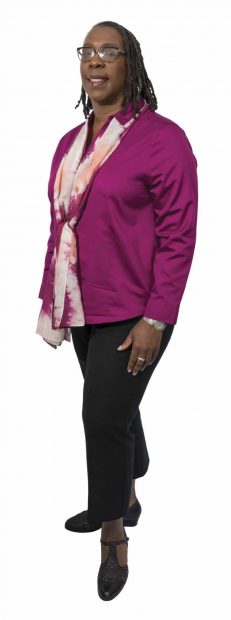 While Avis Hinkson was growing up in a Barbadian immigrant household in Brooklyn, she imagined a career in health care. Instead, her life’s work has been guiding college students, first as an admission officer, later as a director of advising and now as Pomona College’s dean of students. “I didn’t go to college thinking I would stay in college,” she says with a laugh. She tells students that “as a college student, you want to chart a career path, and I encourage you to do that. But I also encourage you to be open to the right and left turns that sometimes take place, because they can lead you to wonderful career spots that you couldn’t have possibly imagined.”
While Avis Hinkson was growing up in a Barbadian immigrant household in Brooklyn, she imagined a career in health care. Instead, her life’s work has been guiding college students, first as an admission officer, later as a director of advising and now as Pomona College’s dean of students. “I didn’t go to college thinking I would stay in college,” she says with a laugh. She tells students that “as a college student, you want to chart a career path, and I encourage you to do that. But I also encourage you to be open to the right and left turns that sometimes take place, because they can lead you to wonderful career spots that you couldn’t have possibly imagined.”
 Absorb the lesson while growing up in a culturally rich neighborhood that education is the path to a better life. Watch your mother, a seamstress, graduate from college in her 50s after going to work as a teacher assistant.
Absorb the lesson while growing up in a culturally rich neighborhood that education is the path to a better life. Watch your mother, a seamstress, graduate from college in her 50s after going to work as a teacher assistant.
 Go along with a high school friend to meet a recruiter from Barnard College. Be impressed that the recruiter is African American, and with the help of financial aid (Barnard costs more than your father makes in a year’s work as a mason), become one of about 25 Black students in a class of 500.
Go along with a high school friend to meet a recruiter from Barnard College. Be impressed that the recruiter is African American, and with the help of financial aid (Barnard costs more than your father makes in a year’s work as a mason), become one of about 25 Black students in a class of 500.
 Bump into Barnard student Vernā Myers on your way to the career center to pick a work-study job as a first-year student. Heed the advice of the future Netflix vice president when she suggests a job in the admissions office. Create Barnard’s first overnight-visit program for prospective students of color.
Bump into Barnard student Vernā Myers on your way to the career center to pick a work-study job as a first-year student. Heed the advice of the future Netflix vice president when she suggests a job in the admissions office. Create Barnard’s first overnight-visit program for prospective students of color.
 Listen to Barnard senior Marcia Sells (a future dean of students at Harvard Law School) when she encourages you to run for the student seat on the Board of Trustees. Take part in the decision that Barnard will remain a women’s college instead of merging with Columbia.
Listen to Barnard senior Marcia Sells (a future dean of students at Harvard Law School) when she encourages you to run for the student seat on the Board of Trustees. Take part in the decision that Barnard will remain a women’s college instead of merging with Columbia.
 After graduation, become an admissions counselor at Bowdoin, establishing minority recruitment programs there. Decide on a career in higher ed instead of health care, later earning an M.A. in student personnel administration from Columbia University’s Teachers College and an Ed.D. from Penn.
After graduation, become an admissions counselor at Bowdoin, establishing minority recruitment programs there. Decide on a career in higher ed instead of health care, later earning an M.A. in student personnel administration from Columbia University’s Teachers College and an Ed.D. from Penn.
 Establish minority recruitment programs at Cornell before coming to Pomona in 1990 as associate dean of admissions. Contribute to Pomona’s minority recruitment plan before moving on to become director of minority recruitment at the University of Southern California.
Establish minority recruitment programs at Cornell before coming to Pomona in 1990 as associate dean of admissions. Contribute to Pomona’s minority recruitment plan before moving on to become director of minority recruitment at the University of Southern California.
 As director of advising for more than 18,000 undergraduates in the College of Letters and Sciences of the University of California, Berkeley, get an eye-opening look at the bureaucracy of a large public university. While furloughed amid a California budget crisis, remember the allure of small liberal arts colleges.
As director of advising for more than 18,000 undergraduates in the College of Letters and Sciences of the University of California, Berkeley, get an eye-opening look at the bureaucracy of a large public university. While furloughed amid a California budget crisis, remember the allure of small liberal arts colleges.
 Go home again and call your 96-year-old father to tell him you’ve been named as Barnard’s first African American dean of the college. Feel grateful that a man who felt most comfortable talking with the public safety officers and janitors when visiting campus lived to see it.
Go home again and call your 96-year-old father to tell him you’ve been named as Barnard’s first African American dean of the college. Feel grateful that a man who felt most comfortable talking with the public safety officers and janitors when visiting campus lived to see it.
 Go home again (again). Leave behind your newly renovated childhood home in Brooklyn and return to Pomona as you are drawn back to the campus where G. Gabrielle Starr has recently become Pomona’s 10th president, the first woman and first African American to lead the campus.
Go home again (again). Leave behind your newly renovated childhood home in Brooklyn and return to Pomona as you are drawn back to the campus where G. Gabrielle Starr has recently become Pomona’s 10th president, the first woman and first African American to lead the campus.
 Discover that April Mayes ’94 is now a professor of history at Pomona, and Nate Kirtman III ’92 is on the Board of Trustees. (Both were student workers in admissions when you worked at the College before.) Know that the seeds you planted have helped make Pomona one of the most diverse private residential liberal arts colleges in the country.
Discover that April Mayes ’94 is now a professor of history at Pomona, and Nate Kirtman III ’92 is on the Board of Trustees. (Both were student workers in admissions when you worked at the College before.) Know that the seeds you planted have helped make Pomona one of the most diverse private residential liberal arts colleges in the country.
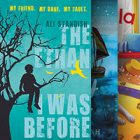
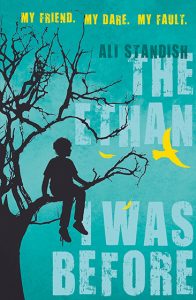 A storyteller from childhood and now an all-grown-up author, Ali Standish ’10 is writing children’s and middle-grade books that are being noticed by children and critics alike.
A storyteller from childhood and now an all-grown-up author, Ali Standish ’10 is writing children’s and middle-grade books that are being noticed by children and critics alike.
Her first book, The Ethan I Was Before, received a coveted starred review from Publishers Weekly: “Readers will be riveted.” Her debut was an award-winner, racking up accolades like the Children’s Book Review Best Book of the Year and the North Carolina Young People’s Literature Award, and landed on a slew of long-lists, including being named a Carnegie Medal Longlist Title.
August Isle, Standish’s second book published by HarperCollins, was released in April and is a work with themes of secrets and lies. A Junior Library Guild Selection, it was praised by Kirkus Reviews as “a beautifully written story. An emotional journey of family, friendship, loss, and healing.”
 Pomona College Magazine’s Sneha Abraham talked to Standish about inspiration, imagination, what’s an absolute must in children’s literature and more.
Pomona College Magazine’s Sneha Abraham talked to Standish about inspiration, imagination, what’s an absolute must in children’s literature and more.
PCM: So, why writing? What led you down this path?
Standish: You know, it’s hard to say that I chose writing. This sounds very cliché, but I think writing more so chose me, or at least storytelling did. A lot of my earliest memories are of making up stories about things. And from when I was really little, my mom and I would play storytelling games. So it’s always been something that I needed to do as a creative outlet. I wrote my first manuscript when I was in the sixth grade and have been writing ever since. When I was at Pomona, I was fortunate to be able to take some creative writing classes with [poet and former Pomona College Professor of English] Claudia Rankine, and it was wonderful. I also was able to do creative writing as part of my study-abroad curriculum in Cambridge.
 I’ve just been doing it for really as long as I can remember. Then one of my really good friends, an important person in my life, passed away in fall of my senior year. And a big part of coping with that for me was writing my first children’s lit manuscript. I wrote a manuscript that was a very boilerplate, poorly written fantasy novel. And I was able to submit that as my final project for Children’s Literature 101. So senior year was when I really edged over into writing children’s literature.
I’ve just been doing it for really as long as I can remember. Then one of my really good friends, an important person in my life, passed away in fall of my senior year. And a big part of coping with that for me was writing my first children’s lit manuscript. I wrote a manuscript that was a very boilerplate, poorly written fantasy novel. And I was able to submit that as my final project for Children’s Literature 101. So senior year was when I really edged over into writing children’s literature.
PCM: Talk about why you moved into children’s literature.
Standish: Astrid Lindgren, who is the author of the Pippi Longstocking series, has this great quote about how she only wants to write for children because children are the only ones who can perform miracles when they read. That quote really resonates with me because I just have such powerful memories of being a reader as a child. And what a sacred experience that was for me and a formative experience. To be a part of creating that for another generation of children, I think, is probably the most rewarding thing that I can imagine doing.
PCM: Where do you get your ideas from?
Standish: I think every book that I’ve written so far has started with a kernel from my own life experience. With The Ethan I was Before, that book really started with the grief that I felt after losing the best friend that I mentioned earlier. With August Isle, it started with a trip to Indiana for a family funeral where I was reminded of a family secret that stoked some curiosity for me, and that I thought could potentially make a good book. Then with Bad Bella, that book is actually based on my own dog, Bella. The one I have coming out in the winter, called How to Disappear Completely, is actually about a girl who gets vitiligo, which is a condition that my husband was diagnosed with a couple of years ago.
It always starts with something from my life experience. Then it becomes a process of finding enough other inspiration in the world around me to take that seed of truth and turn it into a story that is not my story, that is something new and exciting. I was just working on my launch-party speech for August Isle, and I was comparing it to being a kid hunting for Easter eggs. It’s always that hunt of keeping your eyes out wherever you go and waiting for those interesting people to cross your path, or a news article that has something in it that you are drawn to.
And then once you have those different kinds of sources of inspiration, it’s pulling them together and trying to find the connections between them. Because I think how you make the connections between the different elements of your story is how you make your story unique. There’s no subject that hasn’t been written about; it’s how you write about it and what you connect it to that makes it interesting. So that’s the part of the process that really is my favorite part, that gets my neurons really firing—thinking about how to bring things together in a new way.
PCM: How do you feed your imagination? You’re looking for new ways of telling things. What do you do to stoke that fire?
Standish: I read—that’s the main thing. And then I have an overactive imagination. The positive manifestation of that is that I am quite easily able to take someone passing me on the street and create a story around them. The downside is that I have a lot of anxiety in things, and I think that is also a product of imagining different scenarios. Let’s see. I travel whenever I can. That is really helpful. In August Isle, there’s a character who is an old and wizened seafarer who has just come back from a long journey around the world. Being able to rely on what I’ve learned from being in different places is really helpful in that, and it’s cool to be able to introduce those places and different concepts to young readers.
PCM: What’s your favorite book or books from your childhood?
Standish: The two that I always go back to are Bridge to Terabithia by Katherine Paterson and The Lion, the Witch and the Wardrobe by C. S. Lewis. I read both of those books in fifth grade, which was a really transformative and transitional year for me. They are interesting counterparts to one another because they’re both about children who find magic worlds. And in one they stumble into Narnia. But in Bridge to Terabithia they create that world for themselves. That idea really intrigued me. I lived in kind of a rural place that had a little forest in the backyard, and I just decided that my backyard was going to be my magical kingdom and called it “Nabithia,” because I hadn’t learned a lot about originality at that point. I just took Narnia and Terabithia and stuck them together, and I brought that into our playing make-believe. I kept a diary in the hollow of a tree, where I would write down these different episodes that I created for myself. And that was a really foundational experience for me in learning how far I could stretch my imagination and what I could do with it.
PCM: Nature plays a big role in your writing. Can you talk a little bit about that?
Standish: Yes. I wrote The Ethan I Was Before after my husband and I moved to England. I didn’t know anybody. I had no job prospects. I was very isolated. And I was really homesick and particularly homesick for the American South. So writing the setting for The Ethan I Was Before—writing that town of Pam Knot, Georgia—was a way for me to reconnect with a place that I really missed.
Nature played a huge part in my imaginative journey. And I think we continue to learn about how important nature is in terms of development, in terms of mental health. I was just reading an article in The New York Times yesterday written by Oliver Sacks about the importance of gardens in helping patients that have neurological issues. Unfortunately, because of the way that society has moved, it’s harder and harder for kids to have meaningful interactions with nature on their own. So I think it’s more important that they get that through books. If they’re not getting it anywhere else, at least they can have it on a page.
PCM: Narnia is outdoors. You’ve been inspired by that.
Standish: Yeah. You think about spaces like the Forbidden Forest in Harry Potter and how alluring that is. And even going back to fairy tales, we have a fascination with forests and the secrets that can be found there. Een in an age where children don’t play outside as much, I think that fascination is very much in our DNA.
PCM: Something primal about it.
Standish: Yes, yes. And I also think it’s important for kids to develop a healthy appreciation of our Earth and to know how important it is to safeguard it. This is kind of off-topic, but I think we’re coming to a point where we know that this generation is going to be the one who’s either going to really create change and be able to be the ones who are going to force everybody else to save the planet, or they’re not. I think having that emphasis there and that exposure early on is vitally important.
PCM: What elements do you think a children’s or middle-grade book has to have to tell a story successfully?
Standish: I think the biggest thing is honesty. Kids that age are … they’re coming into themselves. They’re already looking back on their childhood with the sense of nostalgia but also suspicion. Because for most of them, if they’ve had healthy upbringings, they have been isolated and insulated from a lot of the harsher realities of life. And they’re really curious about those things. So my books tend to have heavier subject matter in them. Adults come up to me all the time and say, “Do you really think an eight-year-old or 10-year-old wants to read about this?” And my answer is emphatically, “Yes, they do,” because books are a safe place to learn about those kinds of topics, so what better place to introduce them.
Adventure is always going to be key for middle graders because as much as they may be growing up socially, I think a lot of them are still holding on to that quest kind of structure that they have probably read in The Lion, the Witch and the Wardrobe and Harry Potter and books like that. So I always try to mix issues that can be hard to talk about with a sense of adventure and humor and sometimes a little bit of magic that helps to lighten up that heavier stuff.
PCM: Kids can deal with more than we give them credit for.
Standish: Exactly. And, you know, they do with the internet and social media, the way they are; they’re always dealing with more than we know that they are.
PCM: How do you think your Pomona education contributed to your taking this literary path?
Standish: Pomona gave me everything that I needed to be able to take this path. Part of it was just being around so many people who were passionate about whatever it was they were doing. Even if it was something that didn’t seem like it could translate easily into a lucrative career path. And people who were unashamed about what they were passionate about. That made me feel like it was a safe place to explore my passions and to not put myself down for having an idea that I might one day be able to write professionally. I got a lot of encouragement from the faculty there in terms of my writing. I also got an occasional kick in the pants that I really needed.
My advisor was [Professor] Toni Clark, who passed away a couple of years ago. I will never forget the first class I took with her; I wrote an essay on Virginia Woolf’s To the Lighthouse, where I looked at bird imagery. I typed it up and sent it off to her, and she gave me a C-minus. I was devastated and horrified. That was early on in my career at Pomona. I had a sense that it was confirming everything that my impostor syndrome had told me about—not being worthy of a Pomona education.
When I went in to see her to ask her what I could do better and to plead the case for extra credit, she told me that she had given me that grade because she knew from my contributions in class that I could do much better. And if I were another student, she might have given me a different grade, but she knew that I had it in me to do more and she wanted to pull that out of me. I am so thankful that she did that, because even though it was just a little paper and a small moment, it really made the difference in how I—I’m about to cry about it—it really made a difference in how I saw myself and my potential. That was a message that I didn’t get a lot in high school. Pomona gave me a lot of emotional and intellectual tools to be able to pursue this career path.
PCM: It’s touching to have someone see more in you than you see in yourself.
Standish: Exactly. And for a girl who came from Greensboro, North Carolina, to Pomona—my guidance counselor cried when I told her I got into Pomona. She said, “I don’t believe it.” So, when I came, I really was not sure if it was something that I could handle or a place that I belong. So especially for me to have that reassurance was really powerful.
PCM: What are you reading right now?
Standish: I am reading … nothing that’s going to look good, in fact. I would love to say I’m reading Tall Story. But no, I am reading an audio book by an Australian author I love called Liane Moriarty. She did Big Little Lies, which got turned into that HBO series. And then I’m reading a British mystery.
But I will say that’s not my usual fare. Usually my bedside table is stacked high with 10, 12-odd children’s books that I’m reading.
PCM: Do you alternate between children’s books and adult books? Or do you have a method of how you choose your books?
Standish: I try to. It’s important for me to see what’s out there in children’s books. Every time I open a book, I treat it as a learning experience. I always feel like I come away having learned something new about the craft of writing, whether it’s what to do or what not to do. Then when I need a break from children’s books, generally I tend toward hedonistic pleasures in the adult books. I go straight for the mysteries and The New York Times bestsellers.
PCM: Great. No shame in that.
Standish: Yeah, thank you.
PCM: No, no.
Standish: The English major in me does die a little inside.

 WANTED Lead Camera and Lights for a documentary-style film.”
WANTED Lead Camera and Lights for a documentary-style film.”
“Congrats to Maximilian Zarou (PO ’99) on his upcoming TV appearance!”
“If anyone has a short or feature film they’d like to get into a festival, PM me.”
With nearly 2,000 members, the Claremont Entertainment & Media networking group’s Facebook page is a lively community of alumni of The Claremont Colleges who mostly either work in Hollywood or aspire to.
Founded in 2007 by a group that included actor Kelly Perine ’91, the network offers a clearinghouse for job openings, freelance gigs, congratulations and queries from alumni and current students of the seven Claremont campuses.
“I was on the ground floor of getting this puppy up and running, and after 10 years we’re on the brink of turning The Claremont Colleges into forces to be reckoned with, just like other universities that seem to have a stronghold on Tinseltown,” says Perine, who is currently appearing in Nickelodeon’s Knight Squad.
The Claremont Colleges have some Hollywood heavyweights in their corner, including Interstellar producer Lynda Obst ’72 and The Martian producer Aditya Sood ’97, who is also a Pomona trustee.
“What they’re doing is fantastic,” Sood says of the group, also known as CEM.
Before the last decade or so, students and alumni often discovered Claremont entertainment industry contacts either by digging hard or by accident, which is how Sood met his first show business contact, Greg McKnight ’90, now a partner at United Talent Agency. “I was a sophomore sitting in Honnold reading weekly Variety, the print paper,” Sood remembers. “All of a sudden this guy came up to me and said, ‘Oh, how long have they had that here?’ And I said, ‘Ever since I’ve been a student.’ And he said, ‘When I was a student here, I used to write letters to get [the library] to subscribe.’ Then he said, ‘Do you want to get lunch?’ and we did. We became really good friends and have crossed paths many, many times in business over the years.”
At the offices of Lynda Obst Productions on the Sony Pictures studio lot in Culver City, Obst’s right-hand woman is Katarina Hicks ’10, who reached out to Obst because of their Pomona connection and was hired as Obst’s creative executive. She since has been promoted to development executive. There are “tons of people my age in the ‘trenches’ making moves up the ladder,” says Hicks.
Obst proudly notes that one of her former Pomona interns, Justin Huang ’09, is now the head of development at Pearl Studio, the Shanghai-based animation studio formerly known as Oriental DreamWorks. Obst says the CEM group has grown “very strong,” and she continues to speak on the Claremont campuses and offer guidance to students and recent graduates.
“I have always responded to anyone from Pomona, and they’ve come to my office, and I’ve given them advice—but not when I’m in production,” Obst says. “Also, they’ve tended to be my smartest interns, because you know when you get a Pomona person, they can write English sentences; they can analyze scripts; they can speak well; they can think on their feet. I mean there’s just been a very consistently high quality.”
It is a competitive field, and a shared alma mater isn’t enough on its own. But Sood emphasizes the value of the preparation students receive at the 5Cs, as the Claremont undergraduate schools are known. “There’s a real literary component to what we do,” he says. “You’re reading books; you’re analyzing material; you have to have critical thinking and a lot of problem-solving in novel situations. I really think the liberal arts background is a perfect steppingstone for this kind of work.
“The advice I give every time I talk to students is something I didn’t really have but I think would have been great to have: Try to find the other people on campus who also want to do this, and get to know them now. Get to know them as students, because they will form the nucleus of your network that will last you throughout your entire career.”
 The Brooklyn, New York, based indie rock band We Are Scientists—the creation of bassist Chris Cain ’99 and guitarist Keith Murray ’00, who’ve now been performing together for almost 20 years—released the group’s sixth full-length album last April from 100% Records—a new collection of original pop songs, including “One In, One Out” and “Heart Is a Weapon.”
The Brooklyn, New York, based indie rock band We Are Scientists—the creation of bassist Chris Cain ’99 and guitarist Keith Murray ’00, who’ve now been performing together for almost 20 years—released the group’s sixth full-length album last April from 100% Records—a new collection of original pop songs, including “One In, One Out” and “Heart Is a Weapon.”
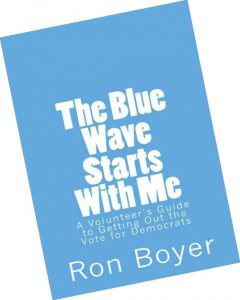 The Blue Wave Starts with Me:
The Blue Wave Starts with Me:
A Volunteer’s Guide to Getting Out the Vote for Democrats
Ron Boyer ’76 penned a book for people asking themselves, What can I do to help elect Democrats?
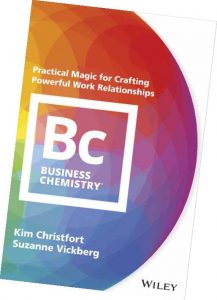 Business Chemistry:
Business Chemistry:
Practical Magic for Crafting
Powerful Work Relationships
Kim Christfort ’96 and Suzanne Vickberg offer a guide to putting cognitive diversity to work.
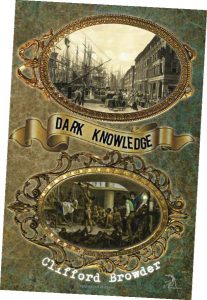 Dark Knowledge
Dark Knowledge
In his historical novel, Clifford Browder ’50 writes about a young man in New York in the late 1860s investigating the illegal pre–Civil War slave trade.
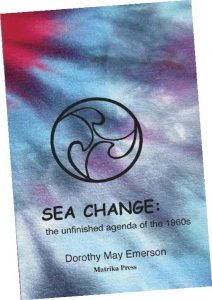 Sea Change:
Sea Change:
The Unfinished Agenda of the 1960s
Dorothy May Emerson ’65 pens personal stories about a young life lived on the edge of hope, change and possibility in California in the 1960s.
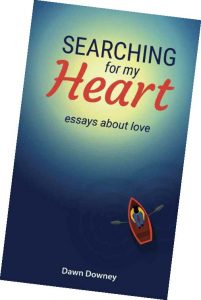 Searching for My Heart:
Searching for My Heart:
Essays About Love
This book by Dawn Downey ’73 contains stories with themes of alienation, shame and the self-awareness that leads to love.
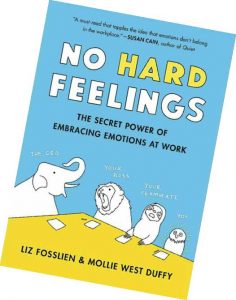 No Hard Feelings
No Hard Feelings
Emotions at Work (and How They Help Us Succeed)
Liz Fosslien ’09 and Mollie West Duffy take a look at emotions in the workplace and how to navigate them.
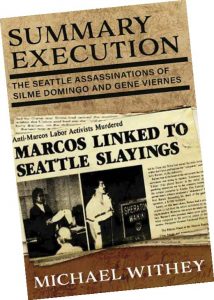 Summary Execution:
Summary Execution:
The Seattle Assassinations of Silme Domingo and Gene Viernes
Michael Withey ’68, P’91 tells a true story that could be a crime thriller: a double murder replete with assassins, FBI informants, murdered witnesses and a foreign dictator.
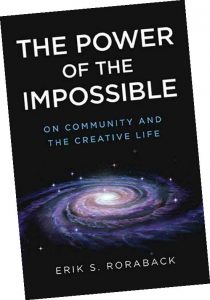 The Power of the Impossible:
The Power of the Impossible:
On Community and the Creative Life
Erik S. Roraback ’89 surveys cultural figures and icons like Spinoza and Ivan Ledi and examines global community formation and creativity.
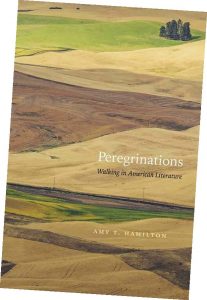 Peregrinations:
Peregrinations:
Walking in American Literature
Amy T. Hamilton ’98 explores physical bodies and movement in American stories and history.
 Sara When She Chooses
Sara When She Chooses
Deedra Cooper ’76, who writes under the name Cat Jenkins, takes the fictional character Sara on a trip to her grandmother’s house—a primitive home that she hates to visit.
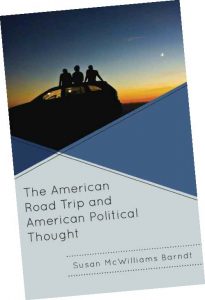 The American Road Trip and American
The American Road Trip and American
Political Thought
Professor of Politics Susan McWilliams Barndt shows how Americans have long used road trips not only as escapism but also as a vehicle to explore questions about American politics.
 San Antonio:
San Antonio:
A Tricentennial History
W.M. Keck Professor of Environmental Analysis and History Char Miller has written the first general history of San Antonio, Texas, the nation’s seventh-largest city and one shaped by environmental, social, political and cultural pressures.
Professor of Mathematics Stephan Garcia has been awarded the inaugural Mary P. Dolciani Prize for Excellence in Research from the American Mathematical Society. He was recognized for his outstanding record of research in operator theory, complex analysis, matrix theory and number theory, for high-quality scholarship with a diverse set of undergraduates and for his service to the profession. The award recognizes a mathematician from a department that does not grant a Ph.D. who has an active research program in mathematics and a distinguished record of scholarship.